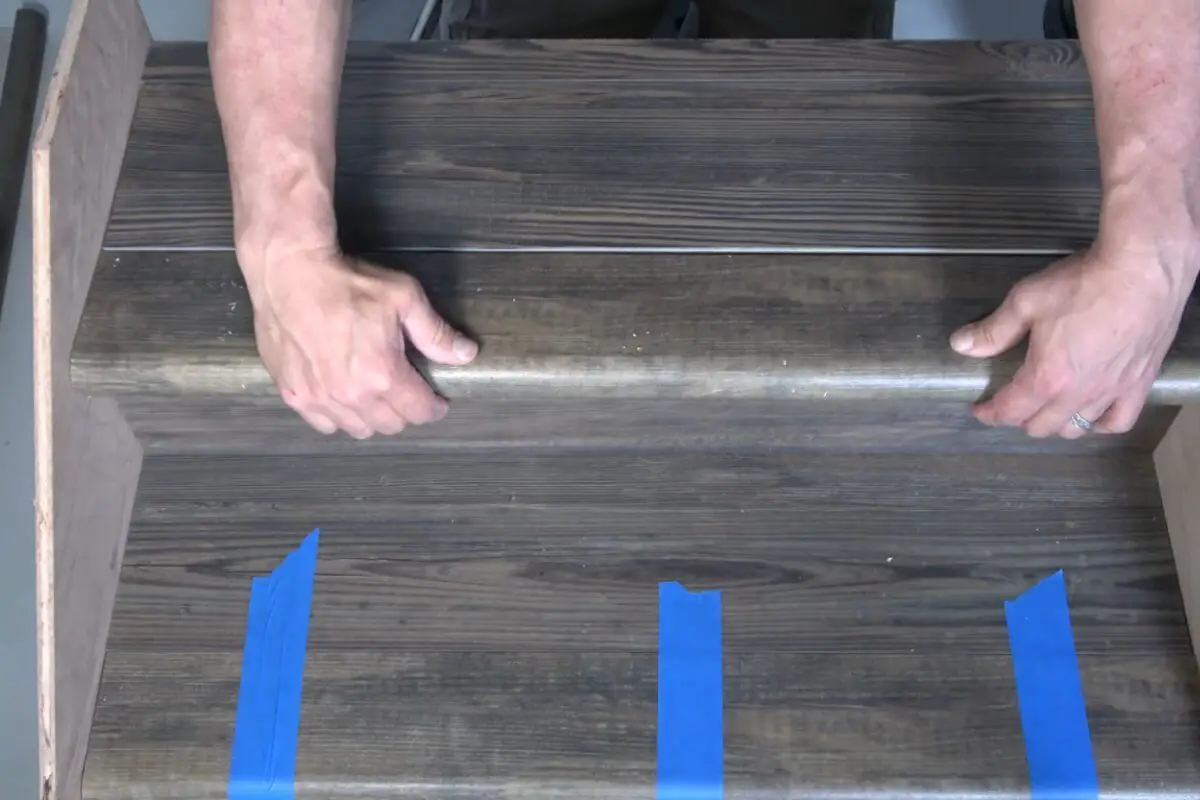When it comes to stair construction and design, selecting the appropriate stair nose is essential. Two common choices for stair noses are flush and overlap profiles. Each profile offers distinct advantages and considerations. In this article, we will explore the differences between flush and overlap stair noses to help you make an informed decision for your staircase.
Flush Stair Nose: Overview
A flush stair nose, also known as a bullnose, is designed to create a seamless transition between the stair tread and the riser. This profile is installed in a way that aligns the top edge of the stair nose with the top surface of the tread, resulting in a flush, smooth finish. Flush stair noses are typically used when the stair tread material is thicker or when a sleek, modern appearance is desired.

Pros of Flush Stair Nose
- Seamless Transition: The flush profile creates a seamless transition between the stair tread and riser, providing a clean and finished look.
- Safety: Flush stair noses eliminate the possibility of tripping on an exposed edge, ensuring a safer staircase.
- Versatility: Flush stair noses can be used with various flooring materials, including hardwood, laminate, vinyl, and tile.
Cons of Flush Stair Nose
- Limited Protection: While flush stair noses provide a smooth transition, they offer minimal protection to the front edge of the stair tread, leaving it more susceptible to wear and damage over time.
Overlap Stair Nose: Overview
An overlap stair nose, also called an overlay or cap stair nose, is designed to overlap the front edge of the stair tread, providing additional protection and coverage. The overlapping section of the stair nose extends beyond the edge of the tread, creating a more pronounced and visible profile. Overlap stair noses are commonly used when the stair tread material is thinner or when extra durability and protection are desired.
Pros of Overlap Stair Nose
- Enhanced Protection: The overlap profile offers increased protection to the front edge of the stair tread, guarding against wear, chipping, and other forms of damage.
- Easy Replacement: In the event of significant damage to the stair nose, an overlap profile can be easily replaced without having to replace the entire stair tread.
- Aesthetic Appeal: Some individuals prefer the more prominent and decorative appearance of an overlap stair nose.
Cons of Overlap Stair Nose
- Visible Transition: The overlapping section of the stair nose creates a visible and pronounced profile, which may not be suitable for those seeking a sleek and minimalistic look.
- Limited Material Compatibility: Overlap stair noses are typically designed for specific flooring materials and may not be compatible with all types of flooring.
Choosing Between Flush and Overlap Stair Nose
When deciding between flush and overlap stair nose, several factors should be considered:
Staircase Design and Aesthetic
Consider the overall design and aesthetic of your staircase. If you prefer a modern, streamlined appearance, a flush stair nose may be the better choice. On the other hand, if you want a more prominent and decorative profile, an overlap stair nose can add visual interest.
Stair Tread Thickness and Material
The thickness and material of your stair tread play a crucial role in determining the appropriate stair nose. Thicker materials, such as hardwood or tile, may work well with a flush stair nose, while thinner materials may benefit from the added protection of an overlap stair nose.
Desired Level of Protection
Evaluate the level of protection you require for your stair treads. If you anticipate heavy traffic or potential wear and tear, an overlap stair nose can provide extra durability and shield the front edge of the tread. However, if protection is not a primary concern, a flush stair nose can still offer a polished look while maintaining a seamless transition.
Installation Considerations
The installation process for flush and overlap stair noses may differ. Flush stair noses are typically installed during the initial construction of the staircase, requiring precise measurements and proper alignment. Overlap stair noses can be installed as a retrofit option, making them more suitable for staircase renovations or replacements.
Personal Preference
Ultimately, your personal preference should guide your decision. Consider your specific needs, style preferences, and the overall look you want to achieve for your staircase. Take into account factors such as safety, aesthetics, and maintenance requirements.
Conclusion
When it comes to selecting the right stair nose for your staircase, both flush and overlap profiles offer distinct advantages. Flush stair noses provide a seamless transition and a sleek appearance, while overlap stair noses offer enhanced protection and a more prominent profile. Your choice will depend on various factors, including the design style, stair tread thickness, desired level of protection, and personal preference.
It’s important to consider the specific requirements of your staircase and flooring material, as well as the visual impact you want to achieve. Consulting with a professional contractor or flooring specialist can provide valuable insights and assistance in making the best decision for your specific needs.
Remember, whether you choose a flush or overlap stair nose, proper installation and regular maintenance will contribute to the longevity and safety of your staircase.
FAQs (Frequently Asked Questions)
1. Can I use a flush stair nose with any type of flooring?
Flush stair noses can be used with various flooring materials, including hardwood, laminate, vinyl, and tile. However, it’s essential to ensure compatibility with your specific flooring type.
2. Does an overlap stair nose require professional installation?
While professional installation is recommended for optimal results, experienced DIY enthusiasts can install an overlap stair nose as a retrofit option. However, precise measurements and proper alignment are crucial for a successful installation.
3. Which stair nose profile provides better protection for the stair tread?
Overlap stair noses offer enhanced protection to the front edge of the stair tread by overlapping and shielding it from wear and damage. Flush stair noses provide a seamless transition but offer minimal protection to the tread’s edge.
4. Can I replace a damaged stair nose without replacing the entire stair tread?
Yes, with an overlap stair nose, it’s possible to replace only the damaged section without replacing the entire stair tread, saving time and cost.
5. Can I combine both flush and overlap stair noses in the same staircase?
While it’s technically possible to combine both profiles, it’s generally not recommended, as it may result in an inconsistent and visually disjointed appearance. It’s best to choose one profile that suits your overall staircase design.



